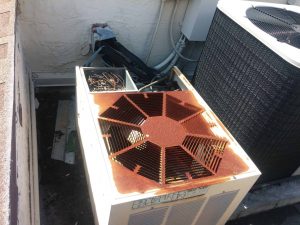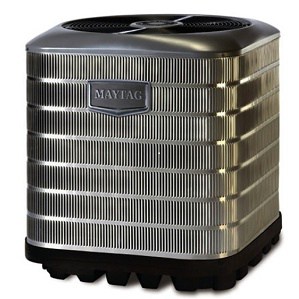AC Replacement or Installation of a New HVAC Unit

You may want to look at AC Replacement if you have had to replace any components, such as the evaporator, condenser coils, or compressor? Money spent on repairs of an old HVAC system could instead be going towards a new, money-saving, more efficient unit.
If you’re considering HVAC replacement, chances are that this is your first time facing such a project and you’re not quite sure what to expect. That’s why we’ve come up with all the helpful information you’ll need, from working with an HVAC contractor and installer to tips that will help you prepare your home before the HVAC replacement project begins. When you work with us we will help you do the following:
- Estimate Your HVAC Costs
- Decide on Replacement of the Entire HVAC System or Repair
- Calculate the Correct HVAC System Size
- Overview of the HVAC Replacement & Installation Process
Replacement of Entire HVAC System
It is recommended when replacing one part of the system, whether the HVAC compressor or the air handler, to update both systems and, at a minimum, have the ductwork inspected in case it needs replacing. Although only one part of your system may need replacing, it’s recommended that you replace the entire system to maintain maximum system efficiency. Replacing the entire HVAC system means spending more money up front but you’ll save money in the long run because your entire HVAC unit will be in sync. Another key is to make sure you do regular maintenance. Our Bayside Comfort Club program saves you money in the long run!
Air Conditioner Replacement & Installation
When to consider AC Replacement
What to Consider When Choosing a New System

So you’ve made the decision to purchase a new AC. How do you choose the right unit?
Here are a few factors that could influence your decision:
- Geographic location – Humidity, average temperature, and overall climate affect the size, type, and economic value of the efficiency you choose. For example, investing in a more expensive, higher-efficiency model is economical for our Florida climate.
- Existing system – Homes with radiant or baseboard heating may not have ductwork. To avoid expensive installation costs, one-room units or ductless mini-splits are the best options. This goes for older homes as well, which likely don’t have ductwork.
Different Types of AC Systems
Many types of A/C systems are available:
- Split system and package ACs are your standard central air conditioners.
- Ductless mini-splits are perfect for cooling homes without ductwork.
- Portable, window, and wall units are designed to cool one room in your home.
- Evaporative coolers, also known as swamp coolers, remove heat using evaporation and work most effectively in dry climates
AC Installation for the Your Home
Not all AC units or duct systems are the same. You can rest assured that your Bayside technician is trained to handle any type of air conditioning installation, including these:
- Central air conditioning installation
- Spit-duct and mini-duct installation
- Evaporative cooler and swamp cooler installation
- Window and wall unit installation
- We are your Trane installer as well as all manufacturers such as Rheem, Trane, Amana, Goodman, Carrier, and Comfortmaker.
Once the unit is installed, we’ll ensure it’s connected to your thermostat and that everything functions correctly. We can work with smart thermostats and smart home systems that use technology to control HVAC systems. If you’re still using a manual system, that works for us too.
AC Unit Installation and More
Once your air conditioning unit is installed and tested, it needs to be maintained to ensure it lasts. Nobody wants to replace their AC prematurely! The good news is that you can depend on Bayside to take care of the future maintenance and repair needs of your unit. We’ll follow the manufacturer’s guidelines to ensure your new unit keeps your home cool and comfortable for years to come.
Getting Ready for the HVAC Installation & AC Replacement
There are several things you can do before the installation crew arrives that can speed up the process. Move valuables such as antiques and irreplaceable objects to a safe location. Many contractors are uncomfortable when asked to move expensive items from work areas, as they do not want to be liable in the case of an accident. In addition, if you have pets, move them to a safe, quiet location away from expected work areas.
Heater Replacement & Installation
My Home Heater Is Not Working: What Should I Do First?
If your heater is acting up or has stopped working entirely, it may be time to consider heater replacement. If you suspect this is the case, it’s time to call Bayside, HVAC technicians are available by appointment or on-call 24/7 to meet your home heating needs.

Is It Time to Replace My Home’s Heating System?
If your heater is not working, it’s time to consider two options: repair or replace. When considering whether to replace or repair your aging heating system, we recommend that homeowners consider five key questions:
- Is the heater working?
- Is the furnace affecting your safety?
- Is your furnace close to the end of its life cycle? On average, furnaces should last 15 to 20 years.
- In the long run, will it cost more to repair and maintain your current furnace than it will to replace it?
- Would your energy bills go down with a new, more energy-efficient model?
It’s important to consider the cost of repair when considering heater repair. At Bayside, we recommend carefully weighing the cost of repair versus the cost of installing a new unit. Be sure to factor in the long-term cost savings of installing a newer, more energy-efficient model.
How Do You Know When to Replace Your Furnace?
Your home’s heating system is an expensive investment. When you’re considering whether to repair or replace your furnace, there are four main factors to keep in mind:
- Age – If your furnace is more than 10 years old, it’s likely not operating at optimal efficiency.
- Repair type and frequency – How frequently do you repair the unit? Are any upcoming repairs expected to be particularly costly?
- Your energy bill – If you’ve noticed an uptick in your energy bill, it may be in part due to an aging furnace.
- Comfort – If your energy bills are rising and the temperature of your home isn’t comfortable, it can be frustrating. Uneven temperatures, trouble keeping up with demand, and freezing air escaping supply registers are all signs that it’s time to replace your home’s furnace.
